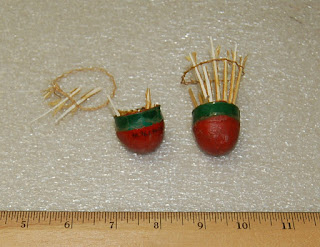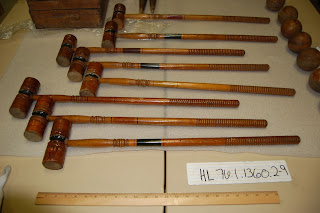We received word yesterday, March 26, on March 30 that all PHMC offices and facilities will remain closed to the public through Friday, April 3 Thursday, April 30. All programs and events are canceled through the end of April, but schedule changes will likely continue for programs in May and beyond. We will update schedule info as we are able. For ongoing updates, visit PHMC's homepage or the official Commonwealth of PA COVID-19 info page.
During this time, staff are taking care of buildings, grounds, and animals or teleworking on site projects and providing digital access to our history and collections. PHMC's Facebook page, Pennsylvania Trails of History, is a good place to start looking for resources to #LearnInPlace or #MuseumFromHome. If you're not already following your favorite site on Facebook, drop me a note in the comments and I'll send you a link.
So while we're here, how about a little of that historical content? In this week's post, curator Rachel Yerger, one of my colleagues in the Bureau of Historic Sites and Museums, highlights some of our "outdoor recreational collections that also promote responsible social distancing."
First up is a 1940s badminton set catalogued to the Degn Collection at
Historic Hope Lodge. Hope Lodge, built between 1743 and 1748, is located in Montgomery County and is a prime example of Georgian architecture. The house was saved from demolition in 1922 by William and Alice Degn, who restored and lived at Hope Lodge until 1957, when the property was turned over to the state. (You can read more about
Hope Lodge's two time periods on the website. Update 3/30: you can
read about Susanna Heath Morris, mother of original owner Samuel Morris, on the Hope Lodge Facebook page. UPDATE 3/31: Be sure to see the embedded post from Hope Lodge at the bottom of this post with photos from the Degn period of residency.)
 |
Top photo: remnants of two badminton shuttlecocks (HL76.1.1409 G-H)
Bottom photo: badminton rackets are measured and photographed as part of the cataloguing process (HL76.1.1409 A-F) |
The game of badminton likely evolved from games played in ancient Europe and Asia. What we know today as badminton was modernized in British-occupied India during the mid-1800s. By the late 1930s, the game had become popularized in the United States. It became an Olympic event in 1992 and with the right equipment, it can also be played in the backyard! To comply with the current protocol on social distancing, I suggest a singles game. [Editor's note: it looks like two racquets' length apart should do it.]
 |
Top photo: croquet mallets lined up for measuring (HL76.1.1360.2-9)
Bottom photo: close-up of croquet balls - you can still see a little of their original paint (HL76.1.1360.10-17) |
Next is a croquet set from the first half of the 20th century. This set is also attributed to the Degn collection at Hope Lodge. The modern game of croquet originated in the 1850s in England and by the 1870s it had reached the U.S. It waned in popularity during the turn of the century but had a resurgence in the 1920s and 30s and then again in the 1960s and 70s. This set is likely from that first resurgence period.
What kind of activities are you doing to beat cabin fever?








0 comments:
Post a Comment